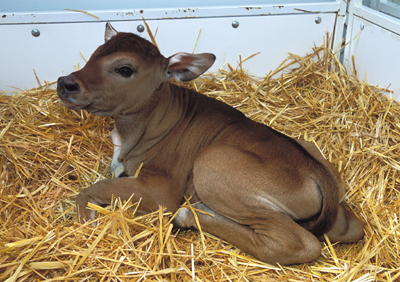

Cloning may seem to show promise as a way to quickly and directly boost population numbers or genetic diversity in endangered species, but the challenges that cloning scientists face in producing healthy animals disqualify cloning as an efficient method to save endangered species. More reliable cloning techniques may be developed in the future, but current biodiversity research should focus less on saving individual species and more on ecosystem preservation. Cloning is not part of Mission 2015's solution to biodiversity loss.
Current cloning efforts focus on preserving genetic material and on cloning via somatic cell nuclear transfer, which will hereafter be referred to as SCNT. The latter process often relies on the former for endangered species, as exemplified by the cloning of a male Javan banteng in 2003. The genetic material used was taken from an adult banteng, which died in 1980, and was stored in the San Diego Zoo's frozen zoo, which currently houses skin cells and DNA from about 8,200 individuals of 900 different species, cryogenically preserved at -321 degrees Fahrenheit (San Diego Zoo Global, 2001). Scientists from Advanced Cell Technology implanted thirty embryos created through SCNT into American domestic beef cows in Iowa. Only two calves were born, one of which suffered from large offspring syndrome and was euthanized shortly after birth (Nature, 2003). The other banteng, which appeared normal at birth, died in 2010, after living for half the normal banteng lifespan (Waters, 2010).
 |
As is suggested by the banteng case, SCNT often fails to produce viable animals. In fact, only 0.5-10 percent of reconstructed oocytes develop into apparently normal adults (Jaenisch et al., 2001). Normal development requires epigenetic regulation of the genome, such as DNA methylation or chromatin modifications (Jaenisch et al., 2001). It is hypothesized that inadequate reprogramming of the DNA from the donor somatic cell is the key reason that clones tend to die during gestation or be born with large offspring syndrome, which is linked to abnormal respiratory and metabolic systems (Jaenisch et al., 2001). Even clones which appear normal at birth or even into adulthood seem to be not "normal," but only less affected than their peers. One study of cloned mice found that they tended to die earlier than normal mice from complications relating to immune deficiency and organ deformation (Jaenisch et al., 2001). Reprogramming errors occur because the maternal and paternal genomes are epigenetically regulated differently in a normal embryo. The only apparent way to correct for this would be to physically separate the parental genomes in the somatic donor cell and treat them differently (Jaenisch et al., 2001), a process which is currently beyond scientific capabilities.
Cloning may have merit as a subject of future research. If an animal could be successfully cloned from a decades-dead specimen of a currently endangered species and grown to sexual maturity, it could increase the genetic diversity of the population into which it would be introduced. In fact, according to Oliver Ryder, an endangered species expert at the San Diego Zoo, the goal of the banteng cloning experiment was just that (Mott, 2011). More fantastical applications of successful cloning can be imagined: cloning poached species to increase supply and reduce the incentive to illegally hunt them in the wild, for example.
However, because cloning is so inefficient and because a solution to the difficulties is not immediately achievable, development of cloning should not be a priority for biodiversity research. Even if cloned individuals are able to join their normal peers, the population is only one part of an interconnected ecosystem. As Ryder says, "The only way to preserve endangered species is to preserve them in their habitat" (Mott, 2011).
1: Somatic cell nuclear transfer is a method of cloning that requires the scientist to remove the nucleus from a somatic (non-sex) cell and transfer it to an oocyte (egg cell) that has had its nucleus removed. Return